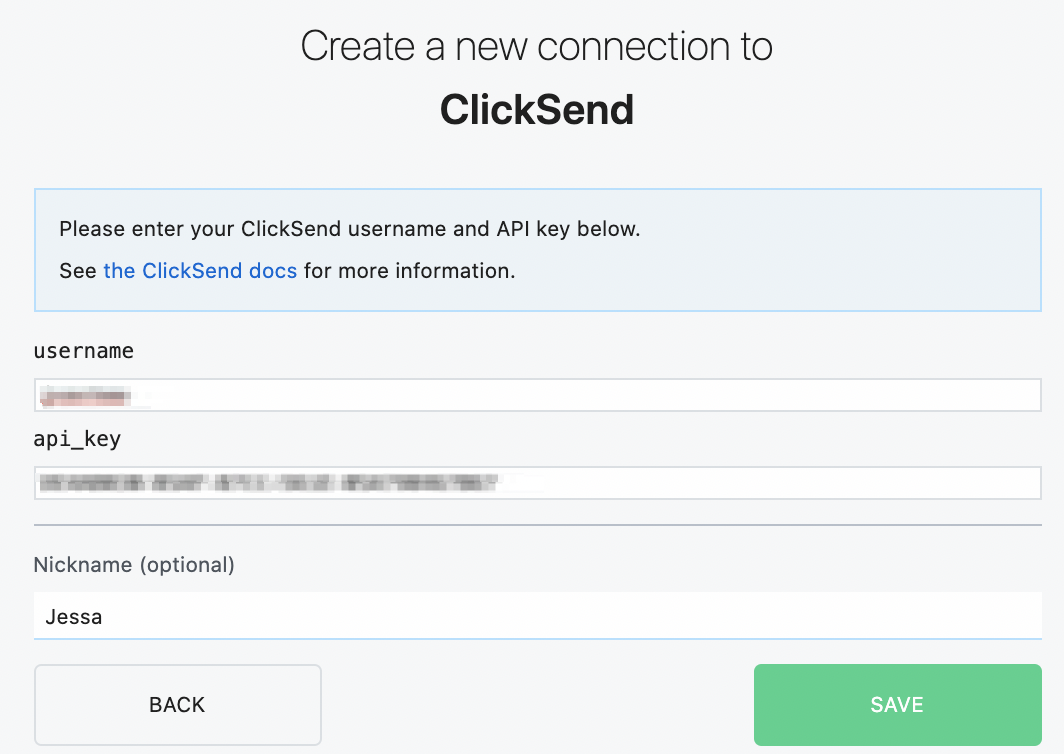What do you want to automate
with ClickSend SMS and Amazon SES?
Prompt, edit and deploy AI agents that connect to ClickSend SMS, Amazon SES and 3,000+ other apps in seconds.
Trusted by 1,000,000+ developers from startups to Fortune 500 companies
Popular Ways to Connect ClickSend SMS with Amazon SES#
Popular ClickSend SMS and Amazon SES Triggers#
Emit new event for each new incoming SMS message received. See the documentation
Emit new event when a new voice message is received or sent. See the documentation
Popular ClickSend SMS and Amazon SES Actions#
Creates a new contact in a specific list. See the documentation
Create a HTML or a plain text email template. See the docs
Sends a new MMS to one or multiple recipients. See the documentation
Send an email using Amazon SES. Supports simple email messaging. See the docs
Overview of ClickSend SMS#
The ClickSend SMS API unlocks the potential to integrate robust messaging capabilities into your workflows. With Pipedream, you can not only send SMS messages programmatically but also automate notifications, streamline communication based on events, and much more. Whether you're confirming orders, alerting staff, or engaging with customers, ClickSend and Pipedream make these tasks seamless.
Connect ClickSend SMS#
import { axios } from "@pipedream/platform"
export default defineComponent({
props: {
clicksend: {
type: "app",
app: "clicksend",
}
},
async run({steps, $}) {
return await axios($, {
url: `https://rest.clicksend.com/v3/account`,
auth: {
username: `${this.clicksend.$auth.username}`,
password: `${this.clicksend.$auth.api_key}`,
},
})
},
})
Overview of Amazon SES#
Amazon Simple Email Service (SES) is a powerful cloud-based email sending service designed to help digital marketers and application developers send marketing, notification, and transactional emails. With the SES API, you can reliably send emails at scale, manage sender reputations, view email sending statistics, and maintain a high deliverability rate. Leveraging Pipedream's capabilities, you can integrate SES seamlessly into serverless workflows, automate email responses based on triggers from other apps, and analyze the effectiveness of your email campaigns by connecting to data analytics platforms.
Connect Amazon SES#
module.exports = defineComponent({
props: {
amazon_ses: {
type: "app",
app: "amazon_ses",
}
},
async run({steps, $}) {
const AWS = require("aws-sdk")
const { accessKeyId, secretAccessKey } = this.amazon_ses.$auth
const ses = new AWS.SES({
accessKeyId,
secretAccessKey,
region: 'us-east-1',
})
const sesParams = {
Destination: {
ToAddresses: ["<your email here>"],
},
Message: {
Body: {
Html: {
Charset: "UTF-8",
Data: "<h1>This is a test</h1>",
},
Text: {
Charset: "UTF-8",
Data: "This is a test",
}
},
Subject: {
Charset: "UTF-8",
Data: "Test email",
}
},
Source: "<your from address here",
};
this.resp = await ses.sendEmail(sesParams).promise()
},
})
Community Posts#

